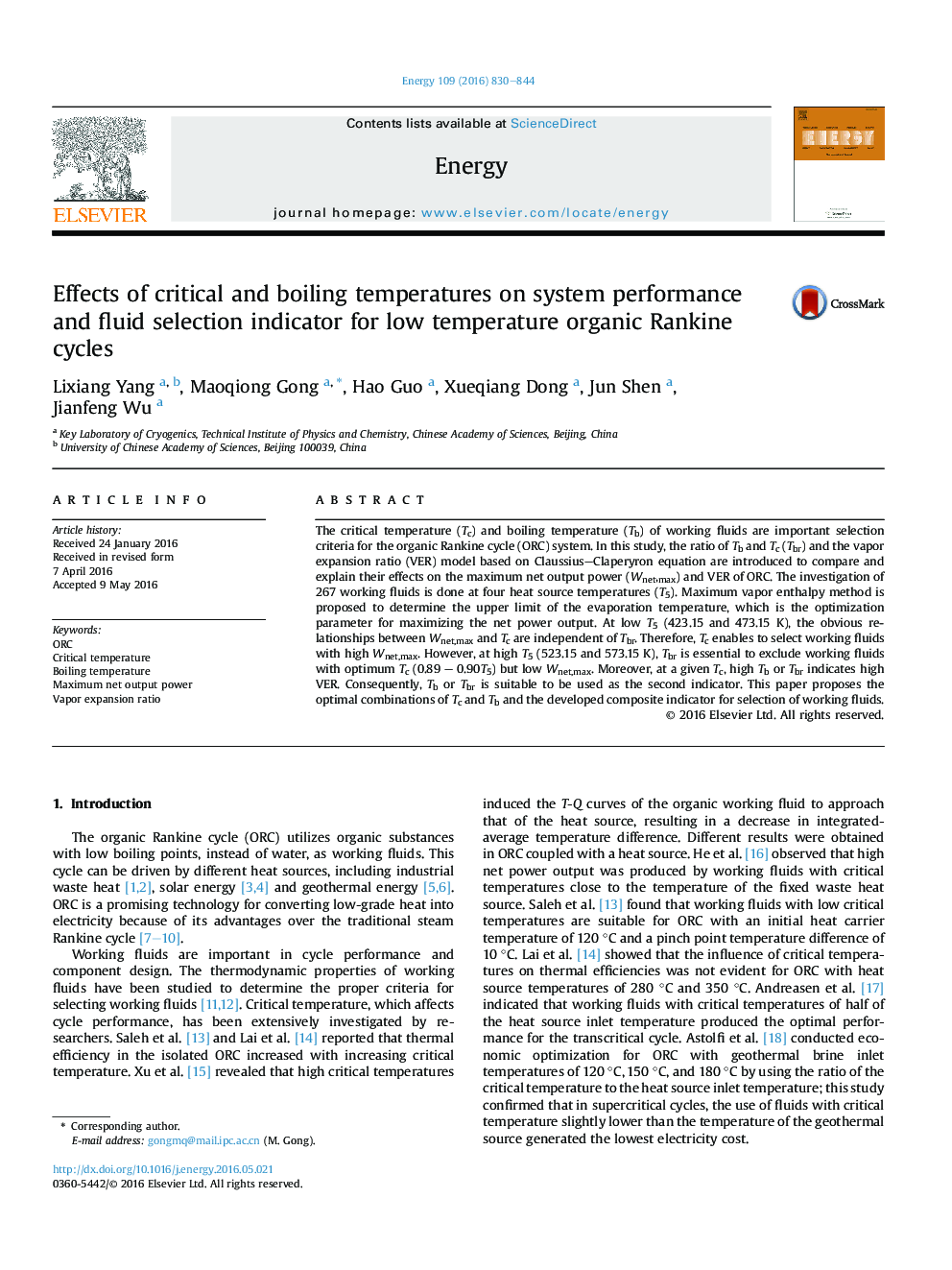| Article ID | Journal | Published Year | Pages | File Type |
|---|---|---|---|---|
| 8073622 | Energy | 2016 | 15 Pages |
Abstract
The critical temperature (Tc) and boiling temperature (Tb) of working fluids are important selection criteria for the organic Rankine cycle (ORC) system. In this study, the ratio of Tb and Tc (Tbr) and the vapor expansion ratio (VER) model based on Claussius-Claperyron equation are introduced to compare and explain their effects on the maximum net output power (Wnet,max) and VER of ORC. The investigation of 267 working fluids is done at four heat source temperatures (T5). Maximum vapor enthalpy method is proposed to determine the upper limit of the evaporation temperature, which is the optimization parameter for maximizing the net power output. At low T5 (423.15 and 473.15Â K), the obvious relationships between Wnet,max and Tc are independent of Tbr. Therefore, Tc enables to select working fluids with high Wnet,max. However, at high T5 (523.15 and 573.15Â K), Tbr is essential to exclude working fluids with optimum Tc (0.89 - 0.90T5) but low Wnet,max. Moreover, at a given Tc, high Tb or Tbr indicates high VER. Consequently, Tb or Tbr is suitable to be used as the second indicator. This paper proposes the optimal combinations of Tc and Tb and the developed composite indicator for selection of working fluids.
Related Topics
Physical Sciences and Engineering
Energy
Energy (General)
Authors
Lixiang Yang, Maoqiong Gong, Hao Guo, Xueqiang Dong, Jun Shen, Jianfeng Wu,
